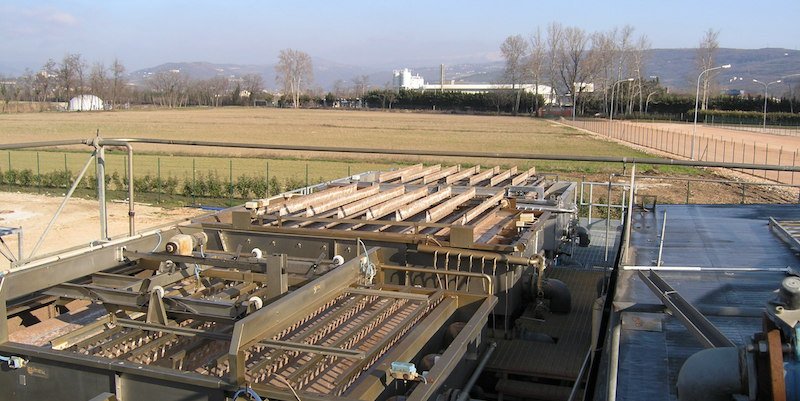
Neuse River Regional Wastewater Treatment Plant
Abstract
The Neuse River Regional Wastewater Treatment Plant (NRRWTP) is a critical infrastructural entity. Serving a significant population in central North Carolina, the plant manages both communal health hazards and ecological impacts. In this comprehensive examination, we address the plant’s current capacity, population served, wastewater volume, key ongoing projects, community engagement, and recent news developments.
Introduction
Water is essential for human survival, and equally important is the management of wastewater. The Neuse River Regional Wastewater Treatment Plant, located in Raleigh, North Carolina, exemplifies a facility that diligently works to ensure the water passed through it is treated to the highest standards before being returned to the environment.
Population Served
The NRRWTP serves a substantial portion of Wake County and surrounding areas, encompassing an estimated population of over 500,000 residents. This substantial service area includes both densely populated urban regions and more sparsely populated suburban and rural areas. The plant’s operations have a ripple effect on a diverse and broad community, ensuring that approximately half a million residents benefit from effective and efficient wastewater treatment processes.
Wastewater Volume
The volume of wastewater treated by NRRWTP is staggering. On average, the facility handles approximately 60 million gallons of wastewater per day (MGD), demonstrating the colossal scale of its operations. This substantial volume encapsulates various forms of wastewater, including residential, industrial, and commercial sources. Effective management of this volume is critical not only for the local community’s health and wellbeing but also for the protection of local waterways and ecosystems.
Treatment Capacity
The NRRWTP is designed with a treatment capacity that ensures it can operate efficiently even during periods of increased demand. The plant has an impressive treatment capacity of approximately 75 MGD, which provides a significant buffer over the average daily volume. This ensures that the plant can handle peak loads and emergency situations without compromising treatment quality or environmental safety.
Recent Local News
Recent news about the NRRWTP has highlighted both successes and challenges. In particular, there has been significant local interest in the plant’s recent upgrades and expansions aimed at further enhancing treatment processes and capacity.
Expansions and Technological Upgrades
One prominent local news story centers on the completion of a multi-million dollar expansion project that has increased the plant’s capacity. This expansion, driven by the growing population and increasing industrial activities in the area, means the plant is now better equipped to handle higher volumes of wastewater, especially during rainy seasons when inflows can be unpredictable.
Environmental Impact Concerns
Another critical news story has focused on concerns from local environmental groups regarding potential impacts on the Neuse River. While the plant adheres strictly to environmental regulations, there have been calls for more comprehensive studies on long-term ecological impacts. The plant’s management has responded by increasing transparency and allowing for more community oversight on its operations.
Key Projects
Various key projects are currently underway at NRRWTP, aiming to fortify its infrastructure and equip it for future challenges.
Nutrient Removal Project
One of the most significant ongoing projects at NRRWTP is the Nutrient Removal Project. The project’s purpose is to enhance the plant’s capacity to remove nutrients such as nitrogen and phosphorus from the wastewater. These nutrients, if not adequately removed, can contribute to algal blooms and other forms of environmental degradation in local water bodies. The Nutrient Removal Project utilizes advanced biological and chemical treatment processes to ensure that effluent is within environmentally safe limits.
Energy Efficiency Initiatives
Another major project focuses on increasing the plant’s energy efficiency. Wastewater treatment is energy-intensive, and the NRRWTP is investing in renewable energy sources such as solar panels and biogas recovery to reduce its carbon footprint. These initiatives not only lower operational costs but also contribute to broader environmental sustainability goals.
Community Engagement
Engaging with the local community is a cornerstone of NRRWTP’s operations. The plant has made concerted efforts to keep the community informed and involved in its evolving processes, understanding that transparency and public participation are vital for long-term success.
Public Tours and Education Programs
The NRRWTP offers regular public tours and educational programs aimed at increasing awareness of the importance of wastewater treatment. These educational initiatives range from guided tours of the facility, which offer a firsthand look at the treatment processes, to classroom presentations in local schools. Through these efforts, the plant hopes to foster a greater understanding and appreciation for the work that goes into maintaining public health and environmental standards.
Community Advisory Boards
In addition, the plant has established a Community Advisory Board comprising local residents, environmental experts, and other stakeholders. This board meets regularly to discuss ongoing projects, review the plant’s performance, and offer feedback on community concerns. This level of engagement ensures that the public’s voice is heard and that any issues are addressed proactively.
Conclusion
The Neuse River Regional Wastewater Treatment Plant stands as a testament to the critical role of infrastructure in maintaining public health and environmental integrity. Serving over 500,000 residents and handling an average of 60 MGD of wastewater, the plant’s operations are vital for both the community and local ecosystems. Recent news stories reflect an ongoing commitment to improvement, from capacity expansions and technological upgrades to addressing environmental concerns. Key projects like the Nutrient Removal Project and energy efficiency initiatives demonstrate a forward-thinking approach, while extensive community engagement ensures transparency and public trust. As the NRRWTP continues to evolve, its dedication to excellence remains unwavering, securing its place as an indispensable asset to central North Carolina.
